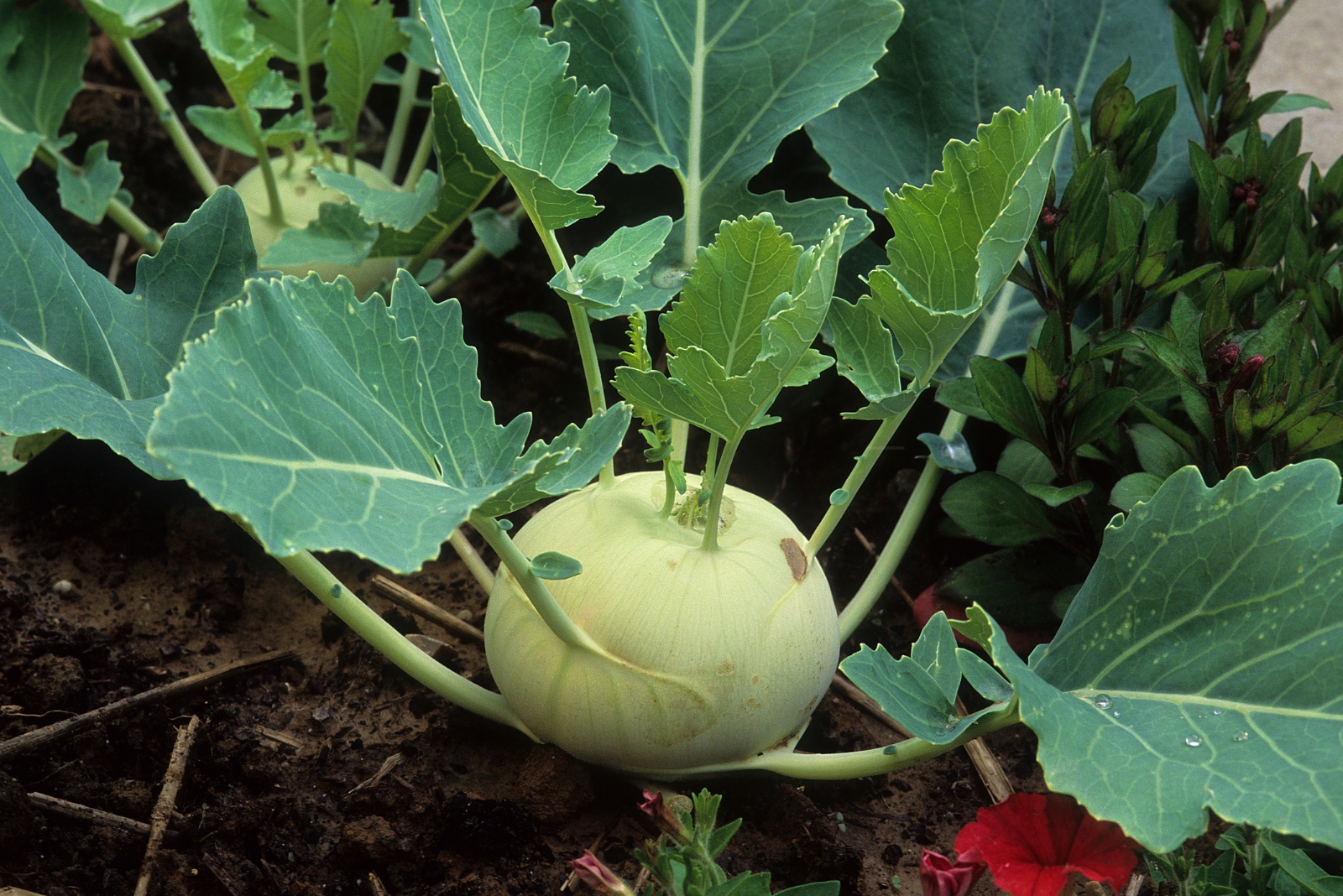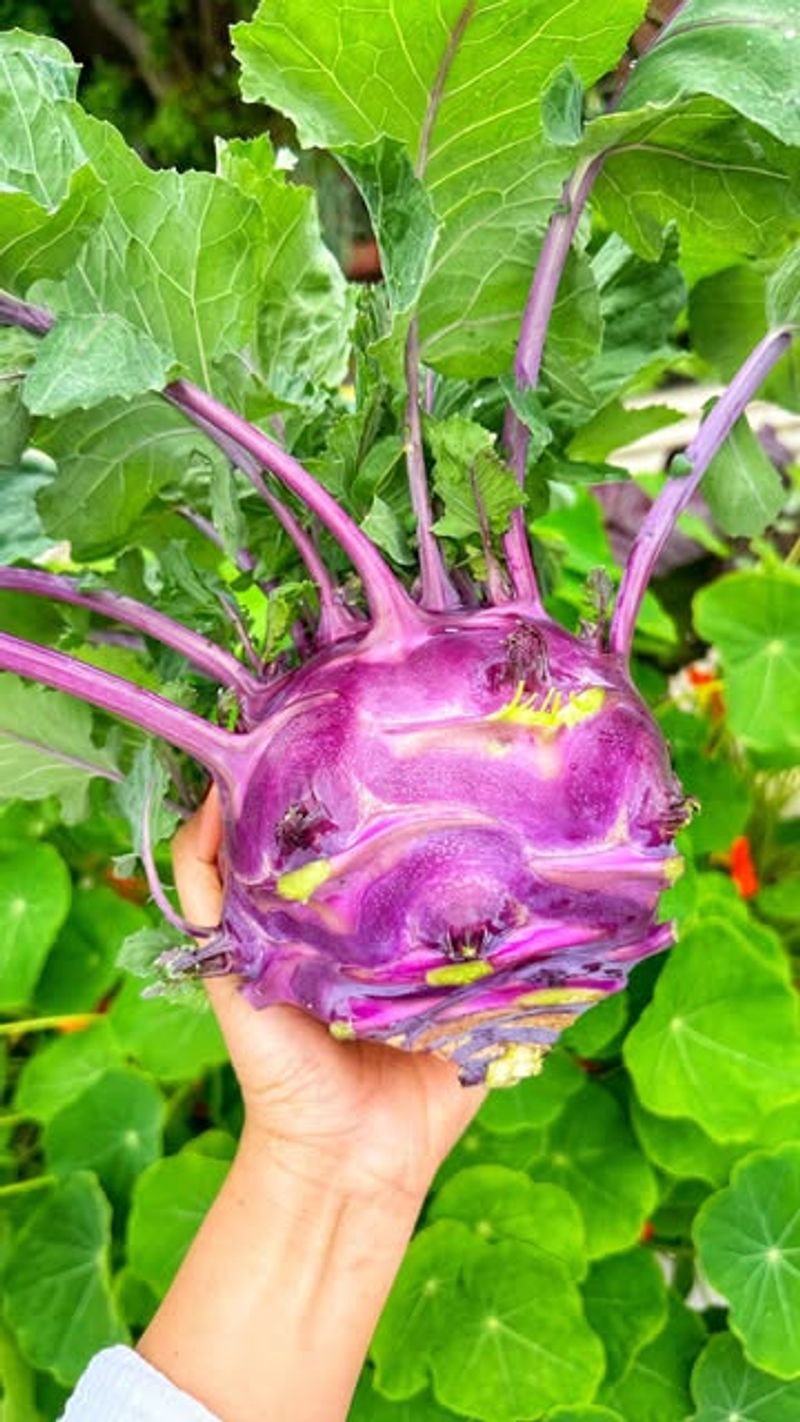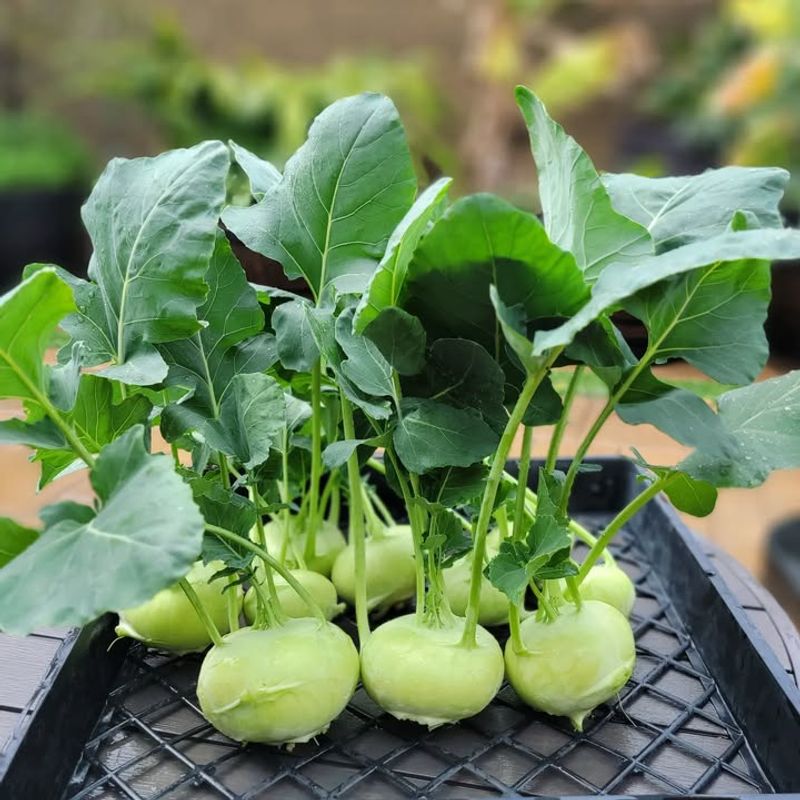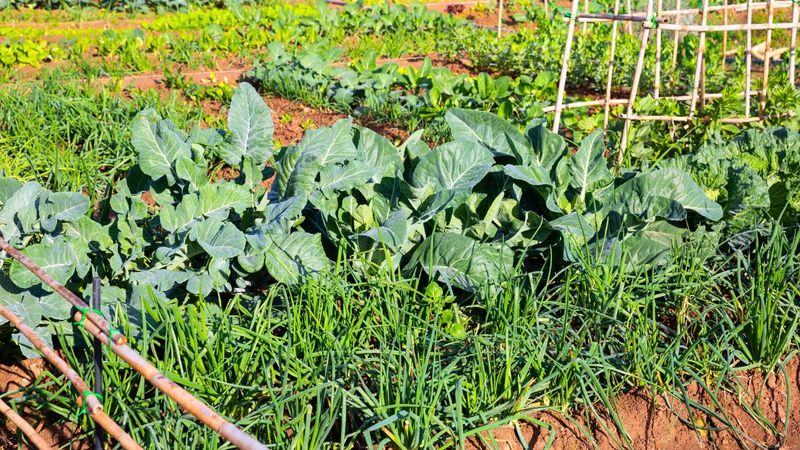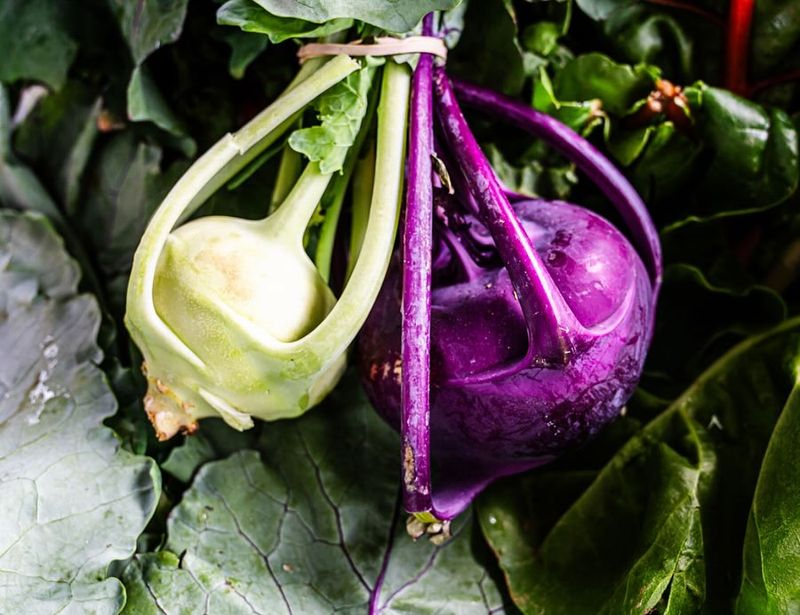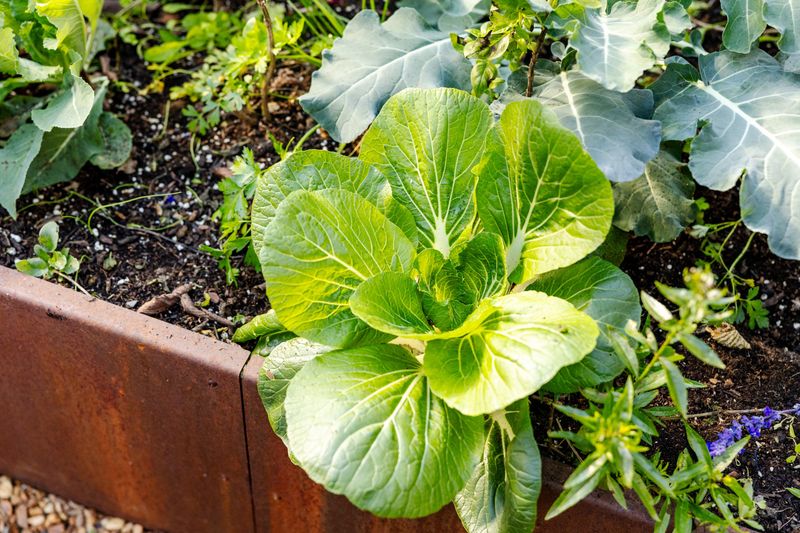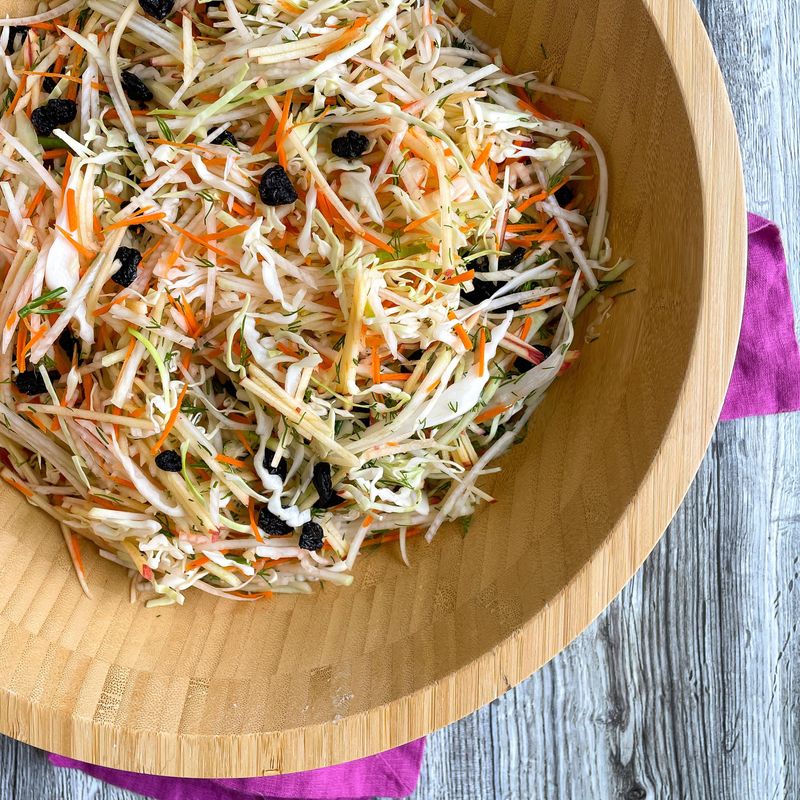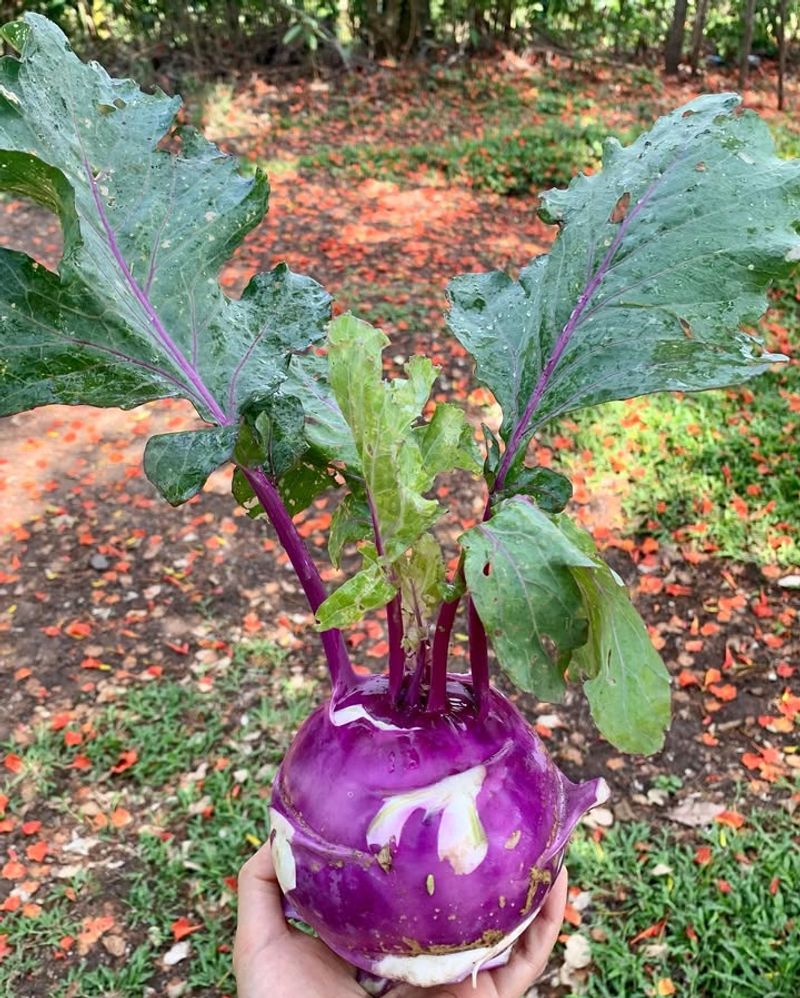Kohlrabi might look like a strange vegetable from outer space, but it’s actually one of the best crops you can grow in Tennessee during fall. October is the perfect month to get these cool-season veggies in the ground before winter arrives.
With its mild flavor and crunchy texture, kohlrabi makes a delicious addition to winter meals while thriving in chilly weather.
1. Kohlrabi Loves Cool Weather
Unlike tomatoes and peppers that need hot summer sun, kohlrabi actually prefers cooler temperatures. When you plant in October, the dropping temperatures help this vegetable develop its best flavor and texture.
Hot weather makes kohlrabi taste bitter and woody, but cool fall conditions create sweet, tender bulbs. Tennessee’s October weather provides ideal growing conditions with temperatures between 40 and 75 degrees.
Frost doesn’t scare kohlrabi either. Light freezes can actually improve the taste by making the vegetable sweeter and more delicious for your winter meals.
2. Fast Growing Means Quick Harvest
Patience isn’t required when growing kohlrabi because it matures incredibly fast. Most varieties reach harvest size in just 50 to 60 days after planting, meaning you’ll be eating fresh veggies before Christmas arrives.
October planting gives you a December harvest, perfect timing for holiday cooking and fresh winter salads. You won’t spend months waiting like you would with carrots or parsnips.
Quick growth also means you can squeeze in another crop if your first planting does well. Some Tennessee gardeners even plant twice during fall for continuous harvests throughout winter.
3. Fewer Pests Bother Fall Crops
Summer Tennessee gardens attract armies of hungry insects, but October planting helps you avoid most pest problems. Cabbage worms, aphids, and flea beetles slow down or disappear as temperatures drop and daylight hours shrink.
Your kohlrabi plants can grow peacefully without constant battles against bugs eating the leaves. You’ll spend less time inspecting plants and more time enjoying your garden.
Cooler weather also reduces disease pressure since many plant diseases thrive in warm, humid conditions. Your fall kohlrabi will likely stay healthier than spring-planted crops without extra spraying or treatments needed.
4. Winter Harvests Save Money
Fresh vegetables get expensive during Tennessee winter months when grocery stores ship produce from far away. Growing your own kohlrabi means free food from your backyard when store prices climb highest.
A single packet of kohlrabi seeds costs less than buying one bulb at the store. That packet contains enough seeds to grow dozens of vegetables for your family all winter long.
You’ll also reduce trips to the grocery store since you can harvest fresh kohlrabi whenever you need it. Walking to your garden beats driving to town, saving gas money and time while getting exercise.
5. Kohlrabi Survives Tennessee Winters
Tennessee winters rarely get cold enough to kill properly established kohlrabi plants. Most varieties handle temperatures down to 20 degrees without protection, and some survive even colder snaps with simple row covers.
Your October-planted kohlrabi develops strong roots before hard freezes arrive. Well-rooted plants withstand winter weather much better than late plantings that don’t establish properly.
Even if tops get damaged by extreme cold, the bulbs often survive underground and can still be harvested. You might lose some leaves, but the delicious part stays safe beneath the soil surface waiting for you.
6. Versatile Kitchen Ingredient
Kohlrabi works in almost any recipe where you’d use broccoli, cabbage, or turnips. You can eat it raw in salads where it tastes like a mild, sweet radish with apple-like crunchiness that kids actually enjoy.
Cooking transforms kohlrabi into something completely different. Roasting brings out natural sweetness, while steaming keeps it tender. It makes excellent soup, stir-fry, and even french fries when cut into strips.
Both the bulb and leaves are edible, giving you two vegetables from one plant. Young leaves taste similar to kale and work great in any cooked greens recipe your family loves.
7. Space-Efficient Garden Plant
Small Tennessee gardens can still produce big harvests when you choose space-efficient crops like kohlrabi. Each plant only needs about 6 inches of space, meaning you can fit many plants in a tiny garden bed or even large containers.
Kohlrabi grows up instead of spreading out like squash or cucumbers. The compact growth habit makes it perfect for raised beds, square foot gardens, or any tight growing space you have available.
You can also tuck kohlrabi plants between slower-growing vegetables. They’ll mature and get harvested before neighboring plants need the extra room, maximizing every inch of your precious garden space efficiently.

